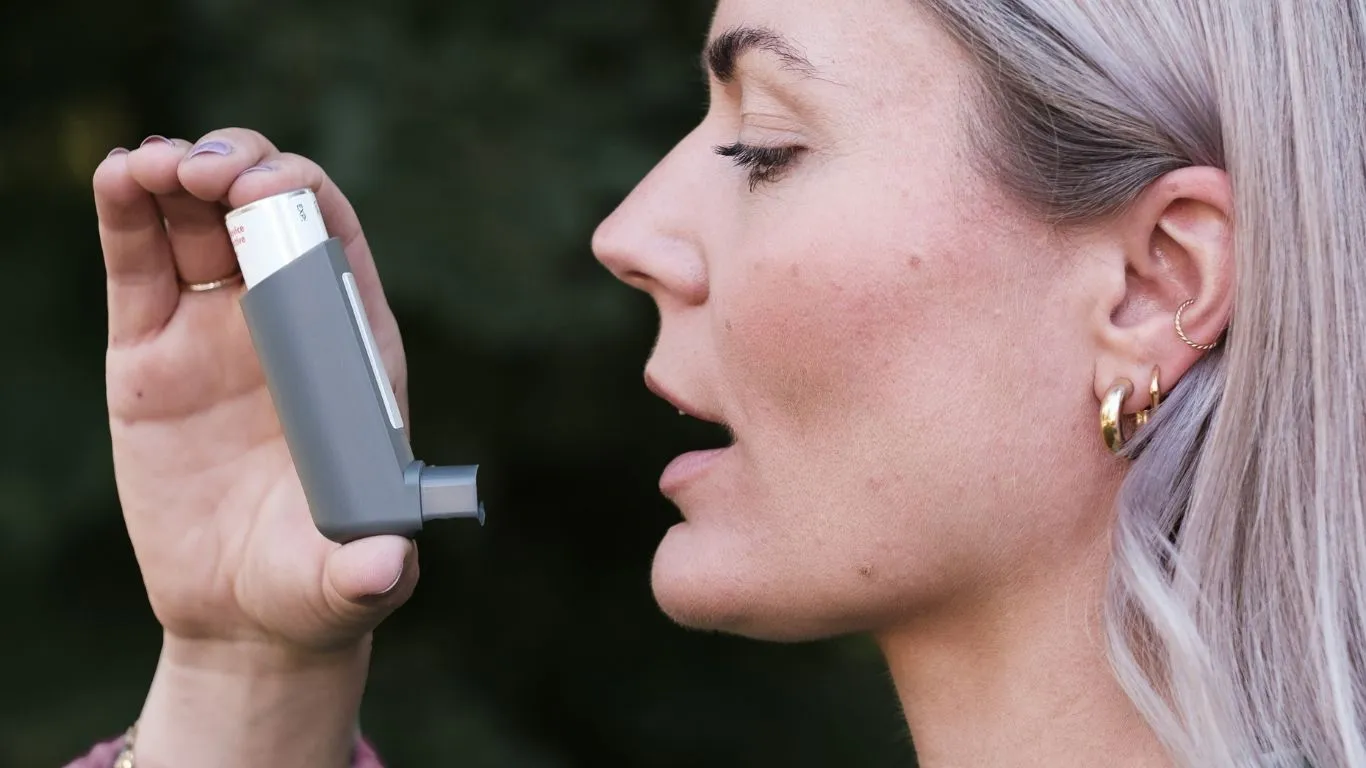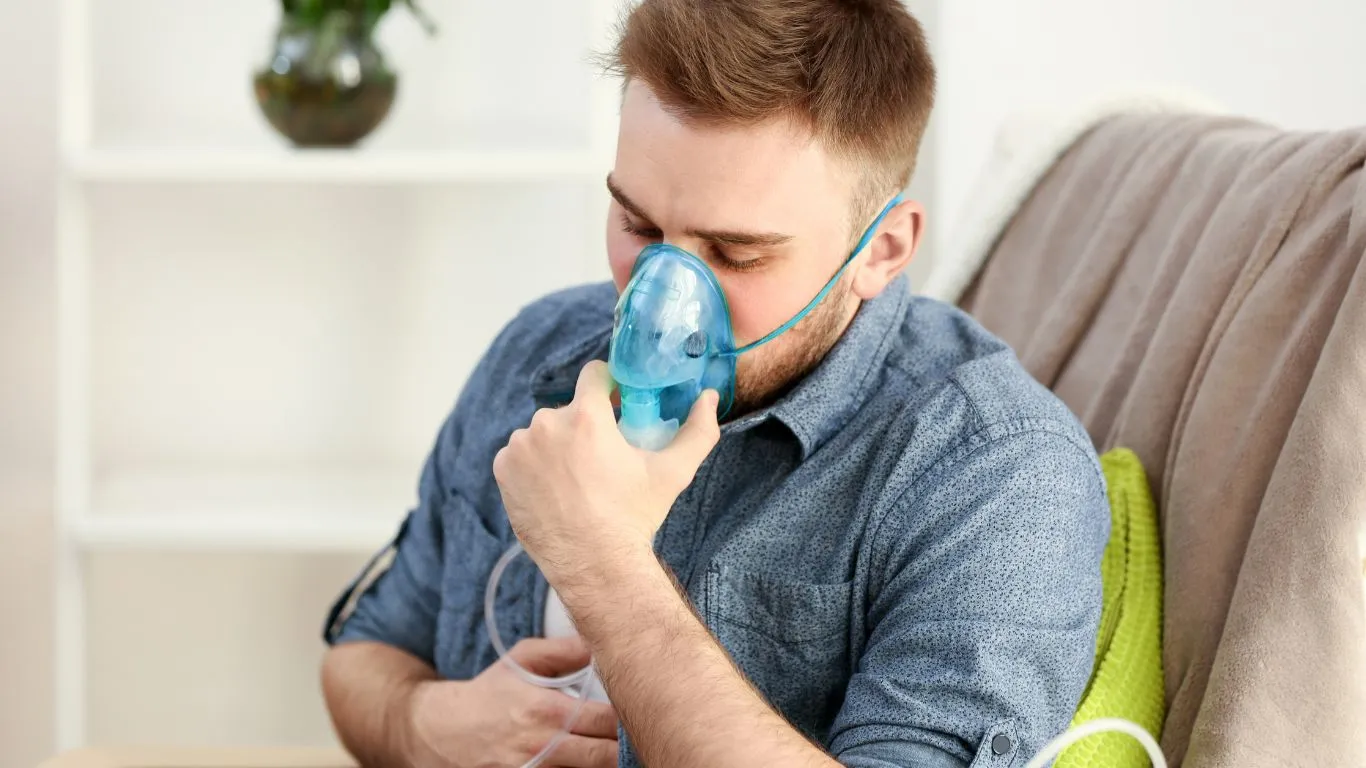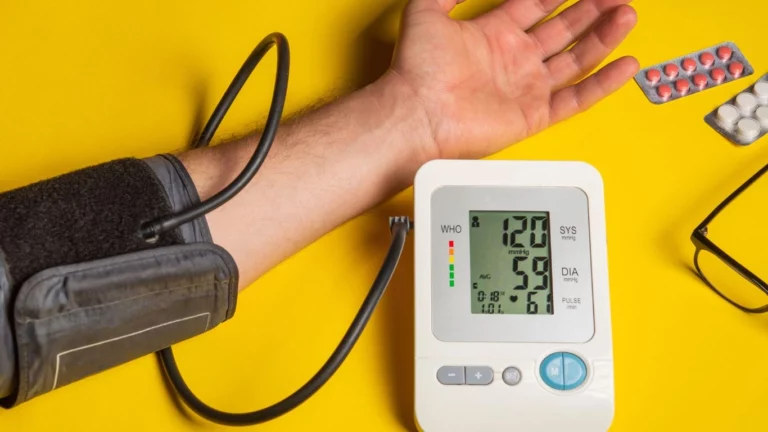Can Weather Pressure Trigger Asthma? Powerful Truth Every Patient Should Know
Can weather pressure trigger asthma? That’s a question I’ve heard time and time again—both at work as a pulmonary nurse and from friends who deal with asthma. And I totally get why it’s such a hot topic. One day the weather’s nice and breezy, and the next, a cold front rolls in, and boom—tight chest, wheezing, coughing. It’s not just your imagination. There’s actually a strong connection between barometric pressure and asthma flare-ups. Let me walk you through what’s really going on in your lungs when the skies are changing.
How Weather Pressure Messes With Your Airways

Ever noticed your asthma acting up right before a storm or when it suddenly gets chilly and damp? That’s not a coincidence. Barometric pressure, or the pressure of the air around us, can fluctuate when weather changes. When that happens, the airways in our lungs—especially if you’re someone with asthma—can get sensitive, inflamed, and constricted. That’s when breathing becomes a full-on challenge.
I’ve had patients come into the clinic during spring or fall, when the barometric swings are wild, saying things like, “It feels like I’m breathing through a straw.” And honestly, that’s a pretty accurate way to describe it. Asthma is all about airway inflammation and hyperresponsiveness. Add weather pressure changes to the mix, and it’s like adding fuel to the fire.
Why Does It Happen Though?
Let’s break it down in simple terms:
- Lower pressure (like right before a storm) means the air is less dense. That can lead to shortness of breath in people with asthma.
- Higher pressure can trap allergens and pollutants closer to the ground, triggering asthma symptoms for those who are sensitive.
- Sudden drops or spikes in pressure can actually irritate the lungs—think of it like your respiratory system being caught off guard.
In fact, I remember one week we had this sudden cold snap, and I saw three asthma patients back-to-back—all with similar complaints. Chest tightness, wheezing, using their rescue inhalers more than usual. And guess what? The weather app showed a big dip in barometric pressure the night before. Coincidence? I don’t think so.
The Science Behind Barometric Pressure and Asthma

This isn’t just a bunch of anecdotal stuff either. There’s solid research out there that supports the link between weather pressure and asthma symptoms. When barometric pressure changes, it can actually cause the airways to narrow even more in someone who already has inflamed lungs. That’s like double trouble.
And let’s not forget the indirect impact. Changes in pressure often come with changes in humidity, temperature, and wind—each of which brings its own set of asthma triggers. Mold spores, pollen, dust—all of these can become more active or concentrated when the weather shifts.
Different Pressures, Different Reactions
Depending on where you live, you might notice different patterns. For instance:
- In humid, coastal regions, the mix of moisture and low pressure often worsens asthma symptoms.
- In dry, high-altitude places, pressure drops can lead to dry airways, which can also be a trigger.
- Urban areas with high pollution tend to trap smog when pressure is high, making the air harder to breathe.
I once visited Denver (hello, high altitude!) and forgot to bring my rescue inhaler—big mistake. Within hours, my chest felt tight and I was short of breath. It was a real-life reminder that air pressure is no joke when it comes to respiratory health.
Can You Actually Prepare for Pressure Changes?

Absolutely, yes! While we can’t control the weather, we can plan ahead. One thing I always tell patients is to keep an eye on the weather forecast—specifically the barometric pressure trends. These days, apps even include pollen counts and air quality indexes, which can be life-changing if you know how to use them.
Some Simple Tips I Recommend to My Patients:
- Stay indoors during drastic weather changes, especially if it’s windy or right before a storm.
- Always keep your rescue inhaler nearby. Seriously, don’t just leave it in your car.
- Use a humidifier if the air gets dry, or a dehumidifier if it’s too damp. Balance is key!
- Keep tabs on pollen and mold alerts. These often spike during certain pressure changes.
- Talk to your doctor about adjusting your maintenance meds during seasonal transitions.
What works for one person might not work for another. I’ve seen some patients get worse in cold, low-pressure systems, while others react more in high-pressure, dry heat. It’s all about knowing your triggers and patterns. If you start journaling how your asthma acts during different weather patterns, you might start to see some eye-opening trends.
How to Tell If Weather Pressure Is Behind Your Asthma Flare-Ups

Reading the Signs—Without a Meteorology Degree
Let me tell you, some of my most proactive asthma patients are basically amateur weather forecasters now. Seriously. They can spot a low-pressure system coming better than some local news anchors. That’s because they’ve started noticing little things—extra tightness in their chest, a random cough out of nowhere, maybe even needing their rescue inhaler more often—all happening right before a storm or temp drop. If you’re feeling “off” and there’s nothing obvious like pollen or dust in the air, take a peek at the barometer. It might be the missing piece of your asthma puzzle.
Some Clues to Watch For
- Unexplained shortness of breath: Even when you’re not active or exposed to known triggers.
- A sudden need for your inhaler: Especially when the weather seems “weird” or is changing rapidly.
- Feeling extra fatigued: Breathing takes more energy when your lungs are working harder.
- Symptoms that flare up before storms: Many patients report a pattern of feeling worse just before it rains.
It’s not always dramatic like in the movies—sometimes it’s just subtle shifts. But as someone who’s watched asthma play out across dozens of weather events, I can promise you this: those little cues matter more than you think.
Best Tools and Apps for Tracking Asthma & Weather Together

Knowledge Is Power—Especially with Lungs Involved
Back in the day, all we had were peak flow meters and patient journals. Now? You can practically have a respiratory control center in your pocket. If you’re not already using tech to help manage your asthma, it’s time to level up. The right app can alert you about pressure changes, track your symptoms over time, and even predict flare-ups based on patterns. I’ve had patients tell me their app warned them to prep their inhaler before they even *felt* symptoms.
Some Nurse-Approved Favorites
- AirVisual: Great for tracking air quality and weather, with pressure data included.
- MyAsthma: Helps log symptoms and connect them with environmental triggers.
- AsthmaMD: Super handy for peak flow tracking, and you can show the data to your doc.
- AccuWeather or Weather Underground: Both offer detailed barometric readings you can monitor daily.
Pro tip from the field? Use two apps: one for asthma, one for weather. Then check them side by side. After a few weeks, you’ll start noticing patterns that can help you stay a step ahead.
Can Weather Pressure Trigger Asthma Even Indoors?

The Indoors Isn’t Always a Safe Zone
You’d think being inside would buffer you from all of Mother Nature’s antics, right? I wish. Atmospheric pressure changes affect the *entire* environment, including the air inside your home. If you’ve ever had a storm roll in and suddenly felt like your lungs were rebelling—even while chilling on your couch—you’re not alone. I’ve had patients tell me they thought they were having anxiety attacks indoors during certain weather shifts, but it turned out to be asthma reacting to a pressure drop.
How to Make Indoors More Asthma-Friendly
- Use a barometric pressure monitor: There are small, affordable ones you can place in your home. Knowledge = preparation.
- Invest in air filtration: Especially HEPA filters. They help reduce indoor allergens that might amplify pressure-related symptoms.
- Seal windows and doors: Prevent sudden air drafts that can carry pressure changes more rapidly into your space.
- Control humidity: Use a dehumidifier or humidifier depending on your climate. Extremes of either can worsen asthma symptoms.
One patient of mine started using a combination weather station and air quality sensor at home—and honestly, it changed everything for her. She felt way more in control of her condition and could finally relax a little knowing she had tools to predict her bad days. We all deserve a breather—literally.
How Healthcare Providers Approach Weather-Triggered Asthma
Not Just Guesswork—There’s Real Strategy Here
From the clinical side, we’re getting better at recognizing how weather impacts asthma. When I first started nursing, this was still seen as kind of a fringe thing—like, “oh, maybe it’s weather, but we’re not sure.” Now? It’s part of the intake questions. I always ask patients if they notice symptoms when the weather changes. And more often than not, they say yes.
How We Build a Treatment Plan Around the Weather
- Personalized action plans: These include steps to take when pressure drops are expected (like increasing inhaled steroid use temporarily).
- Adjusting maintenance meds seasonally: Many patients need higher doses during high-risk seasons—like spring and fall.
- Patient education: Honestly, the more you know about your own triggers, the better you can stay ahead of them. We spend a *lot* of time teaching patients how to spot pressure-related issues early.
I always tell my patients: don’t just survive your asthma, learn how to *read it*. The more you understand about your personal weather patterns, the easier it becomes to stay off the struggle bus.
Debunking the “It’s Just in Your Head” Myth
Let’s Talk Validation for a Second
If you’ve ever had someone roll their eyes when you said your asthma gets worse before a storm, I see you. That kind of dismissal is not only frustrating, it’s dangerous. I’ve had patients second-guess themselves because their symptoms didn’t “make sense” to others. But here’s the truth: your body isn’t lying to you. There’s plenty of emerging science backing this up, and years of bedside experience have already proven it for many of us in healthcare.
Asthma is complex. It’s not just about pollen or colds. It’s also about how your body reacts to the subtle dance of pressure, moisture, and temperature happening all around you. And yes, that includes the sky doing something weird five states away. Don’t let anyone gaslight your lungs.
When to Talk to Your Doctor About Weather-Triggered Asthma

If you’re constantly asking yourself, “Can weather pressure trigger asthma?”—and you’re noticing a pattern—it’s time to loop your doctor into the conversation. I can’t tell you how many people suffer through flare-ups thinking it’s “just part of having asthma” when in reality, a simple tweak in their treatment plan could make a huge difference.
I’ve had patients who finally admitted that cold fronts or humidity spikes send their asthma spiraling, and once we started accounting for those triggers, their quality of life improved dramatically. No more random ER visits. No more missing out on activities because they “felt off.”
What to Bring Up With Your Healthcare Provider
- Track your symptoms: Note the time, date, and what the weather was doing at the time of a flare-up.
- Ask about medication adjustments: Some folks benefit from increasing their inhaled corticosteroids during seasons when pressure changes are frequent.
- Bring up apps you’re using: If you’re tracking pressure and symptoms, show the data. It helps your provider connect the dots.
Your doctor can’t help with what they don’t know. Open communication is key, and trust me, no question is too small or “weird.” Asthma management is highly individual, and weather sensitivity is more common than you think.
Building a Weather-Resilient Asthma Toolkit

So let’s talk about how to actually prepare. You wouldn’t go hiking without water, right? Same goes for asthma and unpredictable weather. Having a reliable toolkit can mean the difference between a minor hiccup and a full-blown crisis.
My Go-To Essentials I Always Recommend
- Rescue inhaler: Keep one at home, one in your bag, and if you can swing it—one at work. Label them if you have to.
- Peak flow meter: A small device that lets you monitor your lung function daily. It’s your early warning system.
- Asthma action plan: Ideally one you’ve created with your provider. Know what to do when symptoms spike.
- Weather & air quality apps: Set alerts for pressure drops or bad air days.
- Personal humidifier or dehumidifier: Depending on your environment, this can help balance indoor air quality.
I had one mom whose teenage son always had flare-ups before storms. Once she started checking the barometric forecast daily and adjusted his routine (like limiting outdoor activity), they cut his emergency room visits in half. HALF. That’s huge.
Real-Life Stories: How Others Cope with Pressure-Triggered Asthma
Let me tell you about a few folks I’ve met over the years who’ve dealt with this head-on. These are real stories (shared with permission), and they prove that with the right awareness and tools, life doesn’t have to stop when the weather shifts.
Mia, 26 – The Weather App Queen
Mia is a barista who noticed she was getting winded during early morning shifts—especially on days the temperature dropped overnight. She started logging pressure data with her asthma symptoms. Eventually, she learned to pre-medicate before shifts when a dip was expected. Game-changer.
David, 42 – The Weekend Warrior
A father of two who loves hiking, David struggled with asthma flare-ups every fall. After working with his pulmonologist, he adjusted his maintenance meds during the cooler months and now uses a smartwatch with a barometric pressure sensor. His symptoms are way more manageable.
Lena, 33 – The Indoor Air Pro
Lena lives in a city where pollution gets trapped on high-pressure days. She invested in an air purifier and checks air quality indexes religiously. She also created an “indoor asthma safety zone” at home with clean air, minimal dust, and stable humidity.
Each of these stories has one thing in common: they paid attention, made changes, and took control.
So… Can Weather Pressure Trigger Asthma? Absolutely—But You’ve Got Options
After years in the pulmonary world and seeing the ups and downs of asthma firsthand, I can confidently say that weather pressure does play a role. But the good news is, it’s not something you’re helpless against. With knowledge, planning, and a bit of tech support, you can absolutely outsmart those pressure swings.
And honestly? Learning how your body reacts to weather—being tuned in like that—is a skill. A powerful one. Whether you’re a lifelong asthmatic or newly diagnosed, keeping an eye on the skies can help you breathe a whole lot easier.
Helpful Resources & Where to Learn More
- National Institutes of Health (NIH) – Solid science and research on asthma and environmental triggers.
- Health.com – Tips, lifestyle ideas, and expert Q&As for living well with asthma.
- Centers for Disease Control and Prevention (CDC) – Guidelines and data on asthma trends, treatment, and prevention.
Don’t be afraid to dig in. Ask questions, talk to your care team, and experiment (safely) with what works for you. Breathing should never be a guessing game.
Disclaimer
This article is based on personal experience as a pulmonary nurse and is intended for informational purposes only. It should not replace professional medical advice, diagnosis, or treatment. Always consult with your healthcare provider before making changes to your asthma care plan.

Bianca Nala is a compassionate Nurse Practitioner with a strong background in primary and respiratory care. As a health writer for Healthusias.com, she combines her clinical expertise with a talent for clear, relatable storytelling to help readers better understand their health. Bianca focuses on topics like asthma, COPD, chronic cough, and overall lung health, aiming to simplify complex medical topics without losing accuracy. Whether she’s treating patients or writing articles, Bianca is driven by a single goal: making quality healthcare knowledge accessible to everyone.






